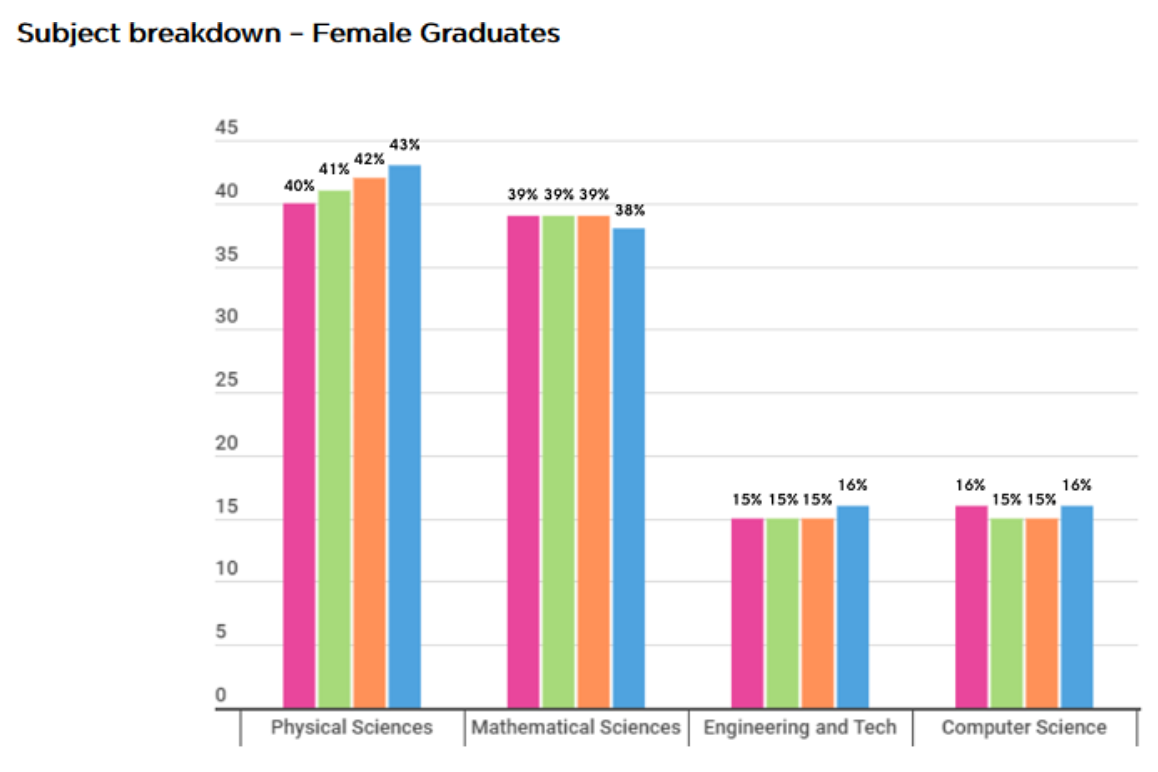Half the UK population are unable to name one famous woman scientist, according to a report from education charity Teach First. How many can you name? Marie Curie and Ada Lovelace – that’s my lot. My teenage daughters weren’t much better: ‘Marie Curie and the woman who worked on DNA that no one remembers’ (Rosalind Franklin!).
My daughters put it down to a lack of female scientists in the school curriculum. Historically, in the UK at least, women didn’t have access to the same level of education as, say, the Newtons or the Faradays, until the late 1800s, and didn’t get any SI units named after them.
But it’s 2021. Dr Who is a woman. So why is it that in three science GCSE specifications from the major UK exam boards, only Rosalind Franklin and Mary Leakey get a mention while more than 40 male scientists feature?
Is it then no wonder that many STEM subjects are still considered ‘masculine’? The ‘Draw a Scientist’ experiments in the USA (that literally asked children to draw a scientist) have decades of data that detail the change in attitudes towards science. In the 1960s almost 100% drew men, but by 2005 this was closer to 70% (and almost 50% among girls). Representation must be improving (though interestingly the most common image drawn throughout was ‘a middle-aged bespectacled male, usually with a beard and unkempt hair, wearing a white lab coat’!)
The same research found that children aged 5–6 years old drew roughly equal numbers of male and female scientists, but as they got older and entered secondary education, both boys and girls tended to draw more male scientists. So somewhere along the way science became more male.

Research by the UK Department of Education found that female pupils in secondary schools are less likely to rank a STEM-related subject first for enjoyment (32% vs 59% for males), and are less likely to consider themselves best at a STEM subject.
Moving up, the latest UCAS data show 35% female students in higher education in STEM subjects. The number is growing, and in subjects such as biology and chemistry, there is near parity. But there is much room for improvement in the more maths-based subjects.
And this is translated into the workforce, where fewer than 30% of the world’s scientific researchers are women.
Which made me think about my chosen profession – med comms. I’ve spent 11 years working in med comms, and 15 years in medical publishing before that, and found both to be predominantly female professions – around 70% of my colleagues at AS&K are female, almost all scientists with a variety of under- and postgrad qualifications.
Why did they choose med comms over research? I asked and got a range of answers, but there were some clear patterns. They love science and learning, but they also love writing. Those who had spent time in a lab didn’t necessarily find it very collaborative, and the constant grant applications were tiring. There’s more security in a med comms job. And there was also the feeling that in med comms, you are closer to directly improving patients’ lives.
Today, 11 February, is International Day of Women and Girls in Science, a day to recognize the critical role that women play in science and technology. So back to those elusive famous women. There has been a recent flourish of female scientists in the news, such as Professor Sarah Gilbert, who designed the Oxford vaccine, and Jennifer Doudna and Emanuelle Charpentier, the Nobel-winning biochemists behind CRISPR gene editing. It’s great to see them getting acclaim, and it would be even greater if they made it onto the school curriculum to inspire the next generation.
But it’s worth noting that female scientists are thriving in our industry. I find it a great privilege to work with so many brilliant and clever female scientists*, with a passion for learning and a flair for communication.
Research’s loss is definitely med comm’s gain.
*And a few men too.
If you’re considering a career in medical copywriting and are looking to get your creative juices flowing in an medical communications agency that values all ideas and voices, drop the AS&K recruitment team an email at Amy.Bremner@asandk.com
To read more about the perks of being an AS&Ker read our benefits blog here.
